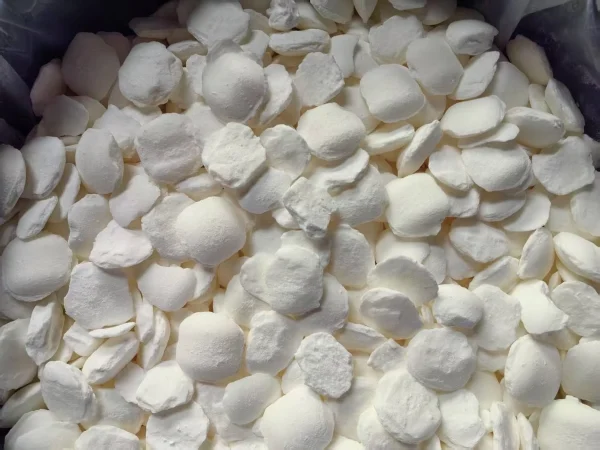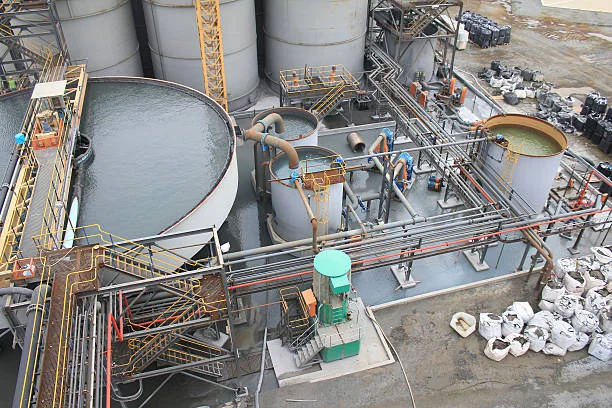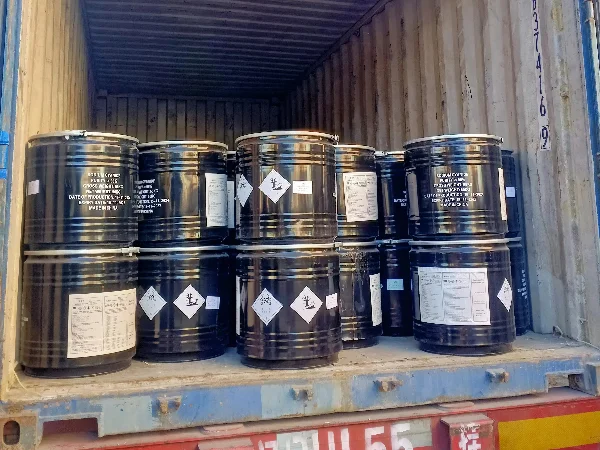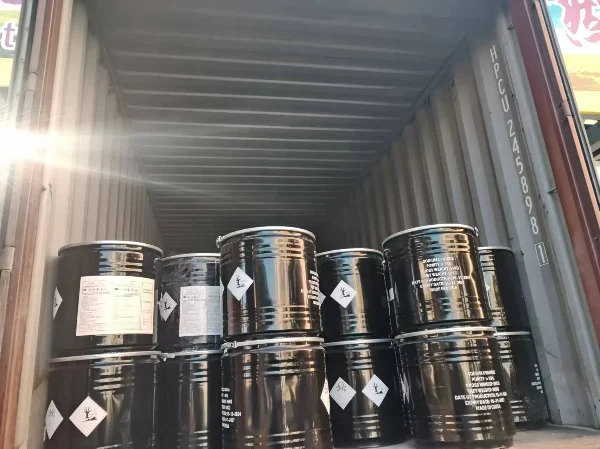
Introduction
Sodium cyanide, chemically represented as NaCN, is a white crystalline compound that holds a significant position in various industries due to its unique chemical properties. Despite its notorious reputation as a highly toxic substance, sodium cyanide plays a crucial role in processes such as mining, chemical synthesis, and electroplating. This article explores the properties, industrial applications, risks, and safety measures associated with Sodium Cyanide.
Chemical Properties
Sodium cyanide is an inorganic compound belonging to the class of cyanides. It is formed through the reaction of sodium hydroxide and hydrogen cyanide. This compound is highly soluble in water, and its reactivity with acids is of particular concern. When Sodium cyanide reacts with acids, it can produce lethal hydrogen cyanide gas.
Sodium cyanide also has the ability to react with certain metals. Notably, in the presence of oxygen, it can dissolve gold and silver, forming complex cyanide compounds. This property is exploited in the gold mining industry.
Industrial Applications
Gold Mining
One of the most prominent uses of sodium cyanide is in the gold mining industry. The "cyanide leaching process" is widely employed to extract gold from ore. In this process, sodium cyanide is used to dissolve gold particles in the ore, forming soluble gold cyanide complexes. These complexes can then be separated from the ore matrix and further processed to obtain pure gold. The cyanide leaching process is highly efficient and cost - effective, making it a standard practice in gold mining operations worldwide. However, it also raises environmental and safety concerns due to the toxicity of sodium cyanide.
Chemical Synthesis
Sodium cyanide serves as a vital precursor in chemical synthesis. It is used to produce a wide range of derivatives that find applications in various industries. In the pharmaceutical industry, cyanide - derived compounds are used in the synthesis of drugs such as penicillin, vitamin B6. and folic acid. In the agrochemical industry, sodium cyanide is involved in the production of pesticides like glyphosate and cyanofenphos. Additionally, it plays a role in the manufacture of dyes and pigments, such as indigo and phthalocyanine blue.
Electroplating
In electroplating, sodium cyanide is a key component. It is used in the plating of metals like gold, silver, copper, and zinc onto the surface of other metals. Sodium cyanide helps in the formation of a uniform and adherent metal coating by facilitating the deposition of metal ions from the electrolyte onto the substrate. It also helps in controlling the rate of deposition and improving the quality of the plated layer. However, due to its toxicity, alternative non - cyanide electroplating processes are being developed and adopted in some cases.
Risks and Safety Measures
The use of sodium cyanide comes with significant risks due to its extreme toxicity. Inhalation, ingestion, or skin contact with sodium cyanide or its solutions can be fatal. Once inside the body, sodium cyanide dissociates to release cyanide ions. These ions bind to an enzyme involved in cellular respiration, inhibiting the enzyme's function. This prevents cells from using oxygen, leading to tissue hypoxia and ultimately death.
To ensure safety when handling sodium cyanide, strict protocols must be followed. Workers involved in the production, transportation, or use of sodium cyanide should receive comprehensive training on its hazards and proper handling procedures. Personal protective equipment (PPE), including gloves, goggles, and respiratory protection, must be worn at all times. Storage facilities for sodium cyanide should be well - ventilated, secure, and designed to prevent leaks and spills. In case of a spill or release, appropriate emergency response measures, such as containment and neutralization using suitable chemicals like sodium thiosulfate, should be immediately implemented.
Environmental Impact
The improper disposal of sodium cyanide can have severe environmental consequences. If released into water bodies, sodium cyanide can dissolve and release cyanide ions, which are highly toxic to aquatic life. Even at low concentrations, cyanide can harm fish, invertebrates, and other aquatic organisms, disrupting aquatic ecosystems. In soil, sodium cyanide can also have negative impacts on soil microorganisms and plant growth.
Industries that use sodium cyanide are required to adhere to strict environmental regulations. These regulations govern the storage, handling, and disposal of sodium cyanide to minimize its release into the environment. Treatment methods for cyanide - containing wastewaters, such as chemical oxidation, biological treatment, and ion exchange, are employed to remove or detoxify cyanide before the wastewater is discharged.
Regulatory Aspects
Given its high toxicity and potential environmental hazards, sodium cyanide is subject to strict regulations at international, national, and regional levels. These regulations cover all aspects of sodium cyanide, from its production and transportation to its use and disposal. For example, in the United States, the Environmental Protection Agency (EPA) and the Occupational Safety and Health Administration (OSHA) have established regulations to ensure the safe handling of sodium cyanide. Industries using sodium cyanide must comply with these regulations, which include requirements for proper labeling, storage, and emergency response planning.
Alternatives to Sodium Cyanide
Due to the hazards associated with sodium cyanide, there is a growing interest in developing and using alternative substances. In the gold mining industry, for instance, thiosulfate leaching is being explored as an alternative to cyanide leaching. Thiosulfate is a less toxic reagent that can also be used to extract gold from ore. However, thiosulfate leaching has its own challenges, such as higher reagent costs and more complex process control. Other alternatives being investigated include the use of bioleaching methods, which rely on microorganisms to extract metals from ores, and non - cyanide lixiviants like halide - based solutions.
Conclusion
Sodium cyanide is a potent chemical compound with a wide range of industrial applications. Its unique chemical properties make it indispensable in gold mining, chemical synthesis, and electroplating. However, its extreme toxicity and potential for environmental harm demand strict safety measures and regulatory compliance. As industries continue to seek more sustainable and safer alternatives, research into replacing sodium cyanide with less hazardous substances is ongoing. In the meantime, proper handling, storage, and disposal of sodium cyanide are crucial to minimize risks to human health and the environment.
- Random Content
- Hot content
- Hot review content
- Soda Ash Dense / Light 99.2% Sodium Carbonate Washing Soda
- Sulphuric Acid 98% Industrial Grade
- Shock Tube Detonator
- Sodium alpha olefin sulfonate (AOS)
- Ethyl alcohol /Ethanol 99.5%
- Food Additive E330 Citric acid monohydrate
- Copper Sulfate Monohydrate (CuSO4-H2O) Powder (Cu:34% Min)
- 1Discounted Sodium Cyanide (CAS: 143-33-9) for Mining - High Quality & Competitive Pricing
- 2China's New Regulations on Sodium Cyanide Exports and Guidance for International Buyers
- 3Sodium Cyanide 98% CAS 143-33-9 gold dressing agent Essential for Mining and Chemical Industries
- 4International Cyanide(Sodium cyanide) Management Code - Gold Mine Acceptance Standards
- 5China factory Sulfuric Acid 98%
- 6Anhydrous Oxalic acid 99.6% Industrial Grade
- 7Oxalic acid for mining 99.6%
- 1Sodium Cyanide 98% CAS 143-33-9 gold dressing agent Essential for Mining and Chemical Industries
- 2High Quality 99% Purity of Cyanuric chloride ISO 9001:2005 REACH Verified Producer
- 3Zinc chloride ZnCl2 for High Molecular Weight Polymers Initiator
- 4High Purity · Stable Performance · Higher Recovery — sodium cyanide for modern gold leaching
- 5High Quality Sodium Ferrocyanide / Sodium Hexacyanoferr
- 6Gold Ore Dressing Agent Safe Gold Extracting Agent Replace Sodium Cyanide
- 7Sodium Cyanide 98%+ CAS 143-33-9









Online message consultation
Add comment: